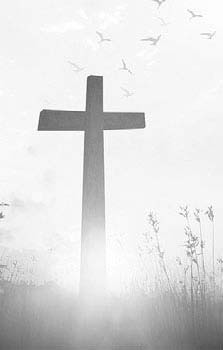Is God Dead?
A few weeks ago, we looked at the beauty beheld in the Golden Ratio, and last week we looked at the beauty found in music that follows the Golden Ratio. But it is the beauty of nature that surpasses all else. After all, God used the wonder and beauty of nature to defend Himself against Job (Job 3842). And it is from the beauty of nature that Paul claims we cannot deny that there is a Creator of all that we see (Rom 1:19ff).
Forrest Gump told Jenny: “In the desert when the sun comes up, I couldn’t tell where heaven stopped and the earth began. It was so beautiful.” I think, maybe, I know what Forrest is talking about. Several years ago, I had the great privilege to sail into College Fjord, Alaska aboard a great ship.
What I experienced there took my breath away. Anticipating the journey, I expected to see God’s fingerprints everywhere along the way; I was not disappointed. I found them in the myriads of people; people from all over the world, from all walks of life, speaking all sorts of languages.
These people—people of Babel— the descendants of the Tower builders still scattered to the corners of the Earth. Their language so long ago confounded by God, was now being rattled off in rapid and uninterrupted garble while trapped amongst them in the confines of an elevator, or from the seat behind us, or the table in front of us. (Genesis 11:1-9) I saw divine fingerprints alive in nature; in the seals and the dolphins, the otter, and the beaver, in the ravens and the eagles. And, as it were, I heard the words of Job whispered in my ear: “Ask the animals and they will tell you; speak to the Earth, and it will teach you, or let the fish in the sea inform you, which of these does not know the hand of the Lord has done this?” (Job 12:79). You see, we truly are “without excuse.”
But nothing prepared for what lay ahead. On the last day of our trip, just up the coast, just a few more knots, and there it was just as it had been for millennia. Perhaps the most beautiful sight in nature my eyes have ever seen is the elegant architecture of the great Artist.
In her secluded splendor hidden away from the public eye, up miles of glass-like water, tucked away in a dead-end Alaskan fjord. A place where the clouds of heaven laced over the mountains of Earth as a shawl, where water slowly flowed as glacial ice, calving shards of frozen history into the silence of the fjord’s grey waters.
Truly, “I couldn’t tell where heaven stopped, and the earth began.” The most beautiful place on Earth lay before me. And there, as it were, did an unknown Hebrew whisper in my ear; “by faith, you should understand that the splendor of nature was formed at God’s command so that what you now gaze upon was not made of what was visible” (Hebrews 11:3). Paul did then echo in the other ear, the “eternal power and divine nature of God Himself are clearly seen, from what has been made, hence O man, people who look upon such beauty and deny God, are without excuse. (Romans 1:20) Soon enough Paul and the saints fell silent, they too now speechless, together, staring into a masterpiece. A masterpiece made through the same One—the same Artist—who made me! My eyes misted over; a teardrop formed, weighed heavy, then crested over and down my cheek. It was all so beautiful.
My soul was fed, my spirit moved: there…. I did glimpse but a piece of heaven in College Fjord, Alaska. Maybe this is why writing about a beautiful encounter seems to somehow diminish it. Our words fail to describe what our eyes see, our hearts feel, and our soul cries for, and clings to. Miravalle believes such “things are too rich for us ever to comprehend them fully—all things were made by the infinite mind of the Creator, and the depth of His brilliance . . . can’t ever be fully appreciated or exhausted by finite intelligence.” Food for the soul; heaven’s majestic gate cracked open, and God beckoned; “come.”
These “rich things,” and rich places have a name. There are certain times, in certain places, when the distance between heaven and earth becomes so very thin. The ancient Celtics and early Christians called these Thin Places; places where the soul feels so very close to God that one can almost reach up and take His hand. Thin - Places. Join us again next week as we continue to look at food for the soul as evidence that indeed human beings are created with both a material body and an immaterial soul. Until then, ask your soul: is God dead?
Gloria in excelsis Deo!
Ty B. Kerley, DMin., is an ordained minister who teaches Christian apologetics, and relief preaches in Southern Oklahoma. Dr. Kerley and his wife Vicki are members of the Waurika church of Christ and live in Ardmore, OK. You can contact him at: [email protected].

.jpg)
